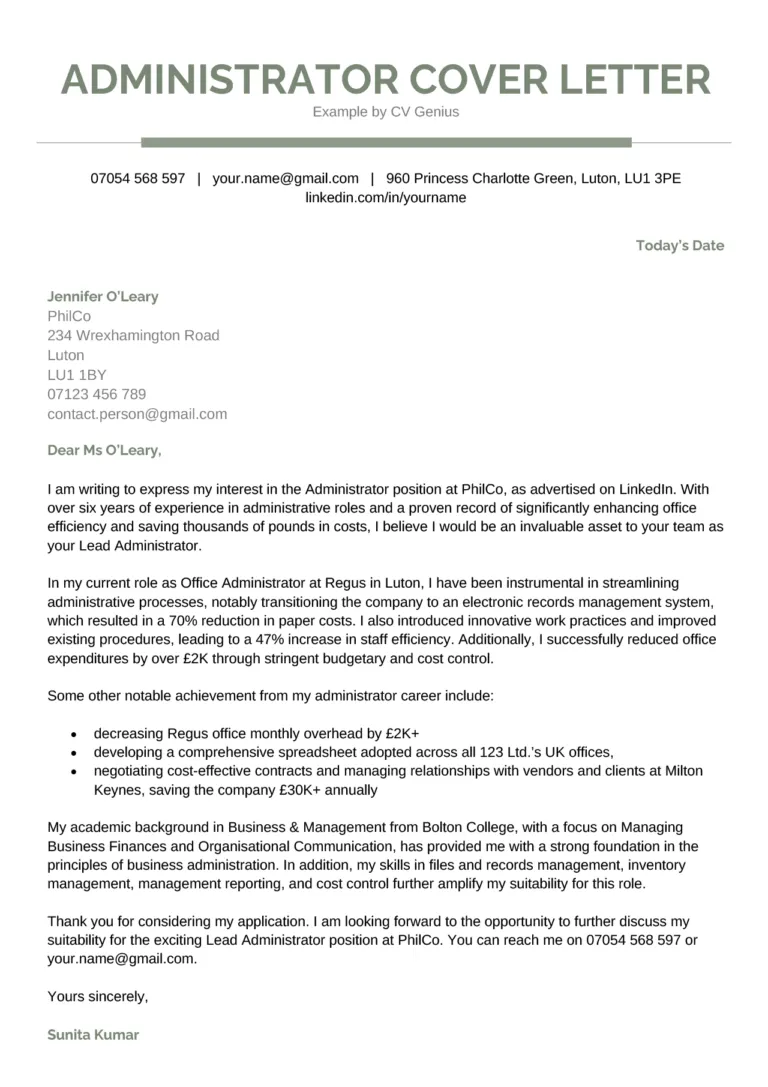What is an Office Administrator Cover Letter
An Office Administrator cover letter is a crucial document that accompanies your resume when applying for office administrator positions. It serves as your first introduction to a potential employer, providing an opportunity to showcase your personality, skills, and experience in a more personal and detailed way than a resume allows. A well-crafted cover letter can significantly increase your chances of securing an interview by demonstrating your genuine interest in the role and highlighting your qualifications effectively. A cover letter is also a chance to distinguish yourself from other candidates, allowing you to make a memorable first impression.
Why is a Cover Letter Important
Cover letters are essential for several reasons. They offer the chance to elaborate on your resume, providing context and depth to your accomplishments. They allow you to demonstrate your writing and communication skills, which are vital for an Office Administrator role. Moreover, a cover letter shows your genuine interest in the specific position and the company, setting you apart from applicants who may only submit a resume. It also gives you the chance to address any potential gaps in your employment history or explain any career transitions. In a competitive job market, a strong cover letter can be the key to getting your foot in the door.
Key Components of an Office Administrator Cover Letter
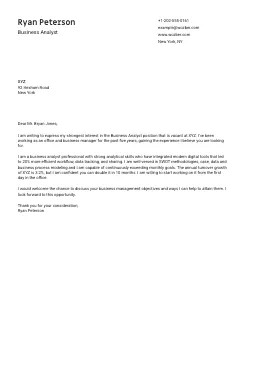
A compelling Office Administrator cover letter has several essential components that work together to present you in the best light. These components include your contact information, the date, the employer’s details, a professional greeting, the body paragraphs, a formal closing, and finally, careful proofreading and formatting. Each section contributes to the overall impact of your application, helping to ensure that your cover letter is both informative and engaging. You will want to ensure that you have all sections covered, and that you address the needs of the employer.
Contact Information
Your Name and Contact Details
At the very top of your cover letter, provide your full name, address, phone number, and email address. This information should be clearly visible and easily accessible to the hiring manager. Ensure that your email address is professional and that your phone number is up-to-date, as these are the primary ways the employer will contact you for an interview. Using a professional email address shows you are serious about the application process, and ready for contact. Double-check to be sure that all of this information is current and accurate.
Date
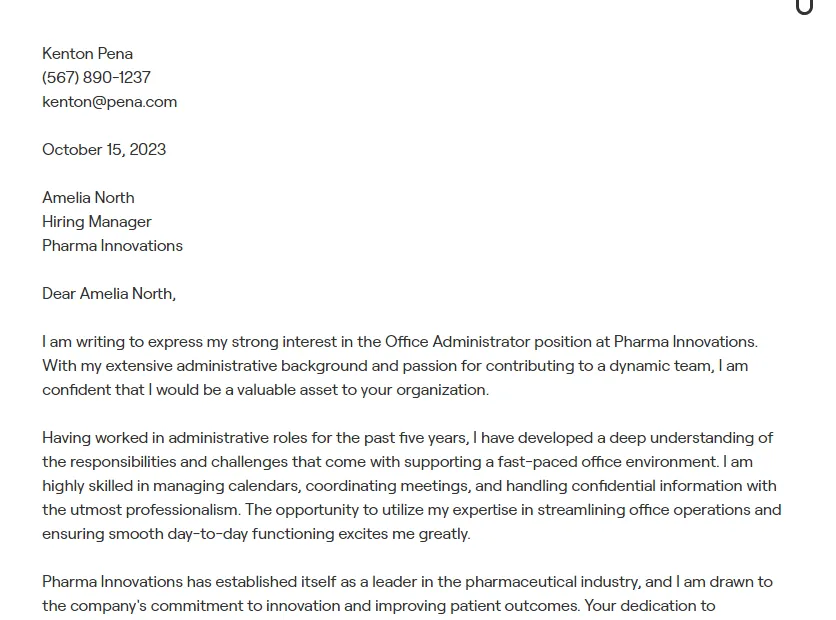
Below your contact information, include the current date. This helps the employer know when you submitted your application. There’s no specific format required for the date; however, be consistent with the format throughout the document.
Employer’s Information
Following the date, include the hiring manager’s name (if known), their title, the company name, and the company’s address. Researching the hiring manager’s name adds a personal touch. If you are unable to find the hiring manager’s name, use the title of the person you are addressing. This level of detail shows that you have taken the time to prepare your application properly and shows you take the details seriously. Be sure to verify your information before you finalize your cover letter.
Professional Greeting
Start your cover letter with a professional greeting. If you know the hiring manager’s name, use “Dear Mr./Ms./Mx. [Last Name].” If you are unsure of the hiring manager’s name, use a general greeting such as “Dear Hiring Manager.” Avoid using generic greetings like “To Whom It May Concern.” A personalized greeting indicates you have put in effort into the application process. Make sure you confirm the gender-specific information you are using is accurate.
Body Paragraphs
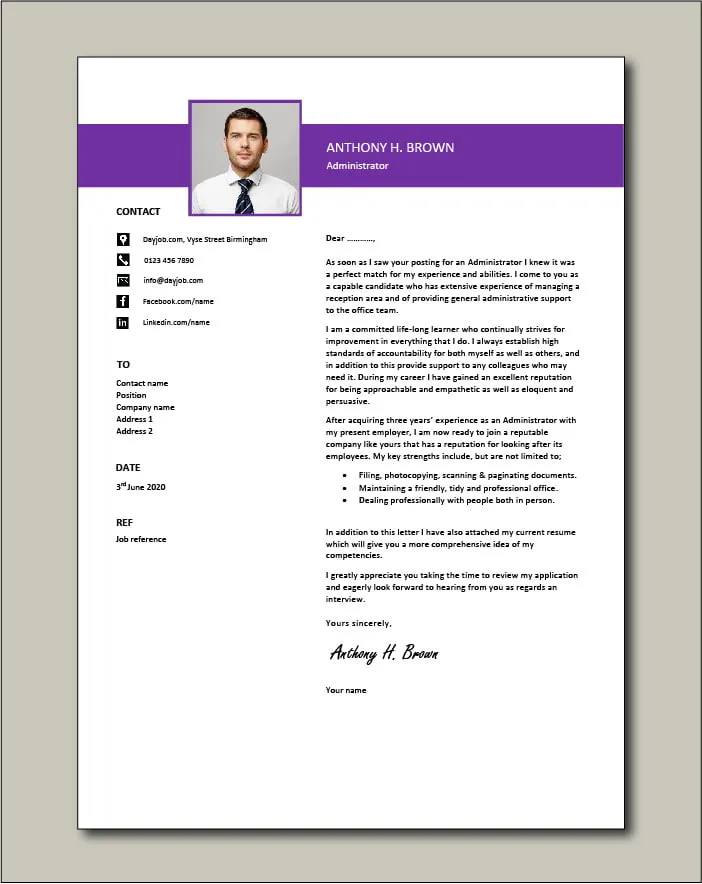
The body paragraphs are the heart of your cover letter, where you highlight your qualifications, skills, and experience. The body paragraphs should be divided into three sections: opening, middle, and closing. Each paragraph should focus on a specific aspect of your suitability for the role. Use clear, concise language and avoid jargon. Your goal is to make a strong case for why you are the best candidate for the Office Administrator position.
Opening Paragraph
Your opening paragraph should capture the reader’s attention and state the purpose of your letter. It should also express your interest in the Office Administrator position. Indicate where you found the job posting (e.g., job board, company website) and mention the job title. Briefly state why you are excited about the opportunity and what makes you a good fit for the company. You want to make a good impression in the first few sentences to encourage the reader to read on.
Express Your Interest
Clearly state your interest in the Office Administrator position. Mention the specific skills or qualities that attracted you to the role. Show enthusiasm and let the employer know why this job is a good fit for you. You want the reader to know that you are excited about the prospect of working with the company and that you see yourself thriving in the role. Make sure that you convey excitement in a professional manner.
Highlight Relevant Skills
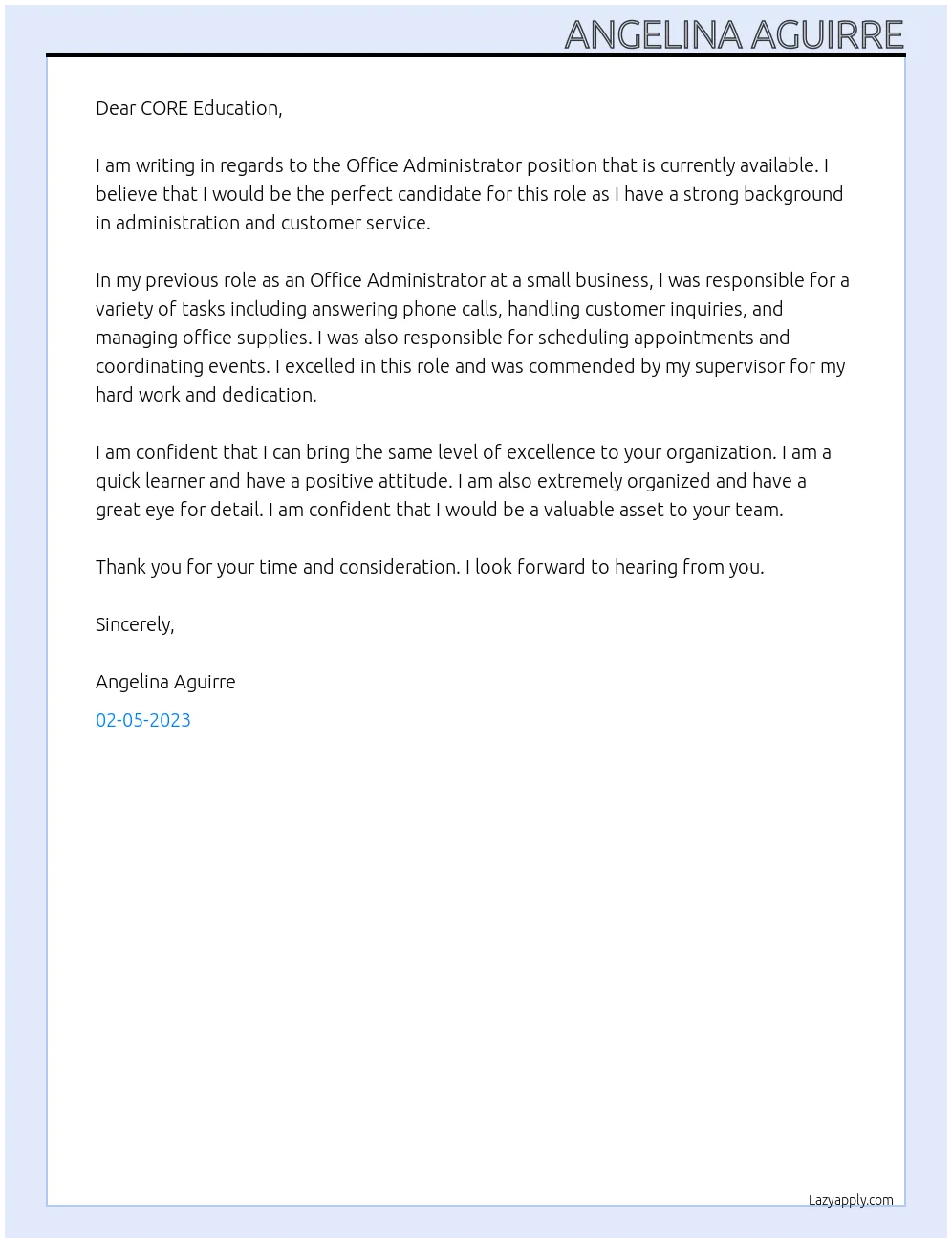
Briefly mention one or two of your most relevant skills for the role. Choose skills that align with the job description and the company’s needs. Some examples include excellent organizational skills, proficiency in office software, strong communication skills, and experience with administrative tasks. Make sure you emphasize skills that highlight how you can contribute to the organization. Your skills should be relevant to the job you are applying for.
Middle Paragraphs
The middle paragraphs should delve deeper into your qualifications and experience. This is where you provide specific examples that demonstrate your ability to succeed in the Office Administrator role. You want to demonstrate that you are qualified and the right choice for the company. Use the STAR method (Situation, Task, Action, Result) to describe your accomplishments and how your skills contributed to positive outcomes.
Showcase Your Experience
Use the middle paragraphs to highlight your relevant experience. Describe your previous roles, responsibilities, and achievements. Focus on experiences that are most relevant to the Office Administrator position. If possible, quantify your achievements with numbers and data to show your impact in previous roles. Employers want to know that you have been successful in similar situations. When possible, use language that indicates you understand the demands of the role.
Quantify Your Achievements
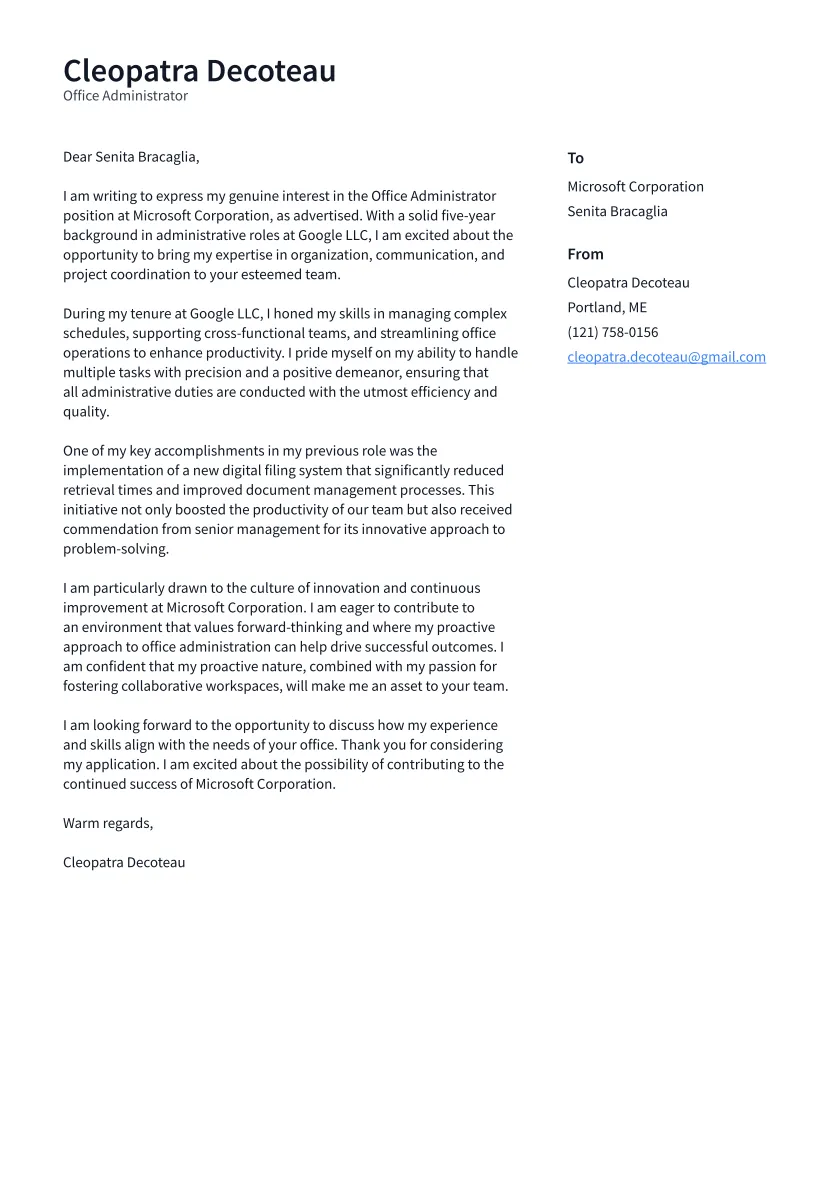
Whenever possible, quantify your achievements to demonstrate the impact you have made in previous roles. This can include metrics such as the number of projects managed, the percentage of cost savings achieved, or the increase in efficiency. Numbers add weight to your claims and make your accomplishments more compelling. Showing the employer that you understand the need for results is essential in the administrative role.
Closing Paragraph
Your closing paragraph should reiterate your interest in the position, express your availability for an interview, and include a call to action. Your closing is the final thing the employer will read before they move on to the next cover letter. A great closing will help you leave a lasting impression and encourage the employer to contact you.
Reiterate Interest and Availability
Reiterate your enthusiasm for the Office Administrator position and the company. Briefly summarize why you believe you are a good fit for the role, highlighting your most relevant skills and experience. Also, state your availability for an interview. Express your willingness to discuss your qualifications further and demonstrate your commitment to the opportunity.
Call to Action
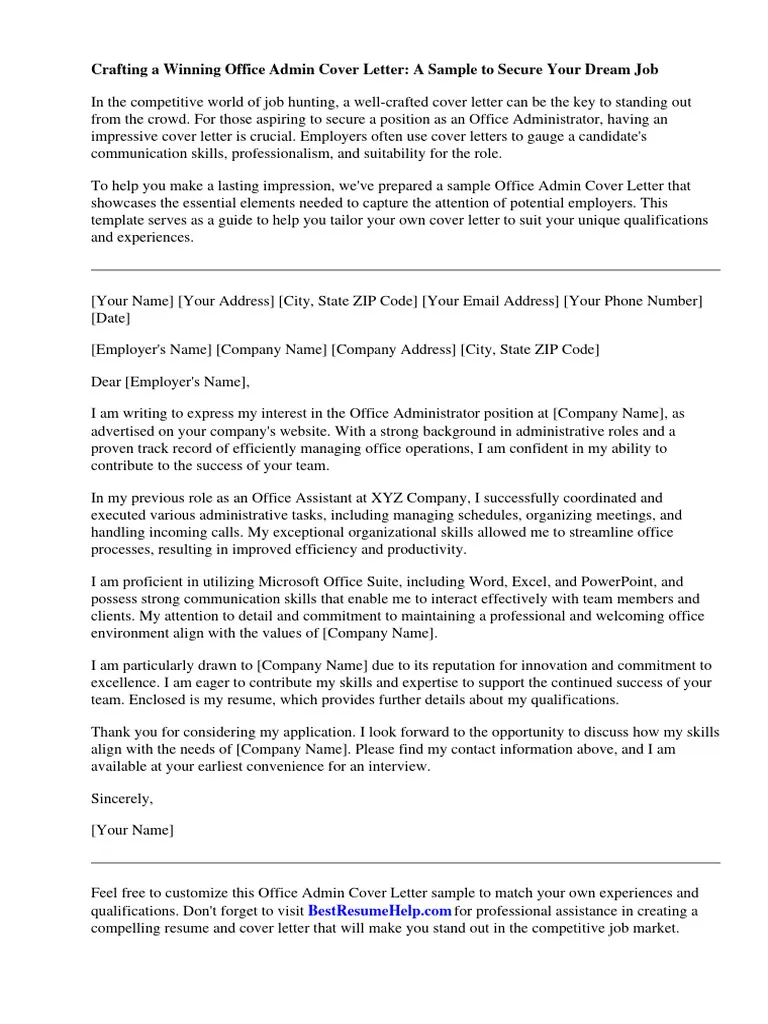
Include a clear call to action. Encourage the hiring manager to contact you for an interview. You can write something like, “I am eager to discuss my qualifications further and would welcome the opportunity to speak with you.” Provide your phone number and email address again for easy contact. This demonstrates your proactive approach and your enthusiasm for the role.
Formal Closing
End your cover letter with a formal closing such as “Sincerely,” “Best regards,” or “Yours faithfully.” Be consistent in your closing choice and make sure it aligns with the tone of your letter. Sign your name below the closing if you are submitting a physical copy. If submitting online, your typed name is sufficient.
Proofreading and Formatting
Before submitting your cover letter, carefully proofread it and ensure proper formatting. The quality of your cover letter speaks volumes about your attention to detail and professionalism. Errors in grammar or formatting can create a negative impression, potentially diminishing your chances of getting an interview. Always proofread your documents.
Proofread Carefully
Carefully proofread your cover letter for any spelling, grammar, or punctuation errors. Read your cover letter aloud to catch any awkward phrasing or sentence structure issues. Have a friend or family member review your cover letter as well to get a fresh perspective. Check to be sure that you have used the right names and titles for all the people involved. It’s often helpful to set the document aside for a few hours and review it with fresh eyes.
Formatting Tips
Use a professional and easy-to-read font, such as Times New Roman, Arial, or Calibri, with a font size between 10 and 12 points. Use clear headings and subheadings to organize your content. Make use of white space to improve readability. Keep your paragraphs concise and avoid long blocks of text. Use bullet points to highlight your skills and accomplishments. Make sure the formatting is consistent throughout the entire document. All of this will help ensure that the reader can review and absorb the information easily.
Cover Letter Examples
Reviewing cover letter examples can provide a helpful template and inspiration for your own letter. Here are some examples to guide you, but always tailor your letter to your specific situation and the job requirements.
Example 1
This example would feature a general cover letter, suitable for a wide range of Office Administrator positions. It highlights strong organizational skills, attention to detail, and proficiency in common office software. The focus is on showcasing reliability and adaptability in various administrative tasks. This type of cover letter is best for individuals with broad experience in administrative roles.
Example 2
This example would be more specialized, emphasizing experience in a specific industry, such as healthcare or finance. It would feature skills related to managing sensitive information, dealing with specific regulatory requirements, and using industry-specific software. This cover letter example would be aimed at candidates with experience in highly regulated or specialized industries. It focuses on how the applicant has applied their skills in that particular industry.
Example 3
This example would focus on a career change or a situation where an individual’s experience is not directly in office administration. It emphasizes transferable skills and explains how skills from a different background can be applied. The focus is on adaptability and a willingness to learn. The cover letter would stress transferable skills such as communication, organization, and customer service.
Tips for Tailoring Your Cover Letter
Tailoring your cover letter to each job application is essential. Generic cover letters rarely impress employers. By customizing your letter for each position, you can highlight the specific skills and experiences that match the employer’s needs. Here are some key tips to keep in mind when adapting your cover letter to fit the job.
Research the Company
Research the company to gain a better understanding of its values, mission, and culture. Visit the company’s website, social media pages, and any other available online resources. Use the information you gather to tailor your cover letter to reflect your understanding of the company’s needs. This will show the employer that you have taken the time to get to know the company before applying. Tailor your letter with information about what you know about the company.
Use Keywords from the Job Description
Carefully review the job description and identify key skills and requirements. Incorporate those keywords into your cover letter where appropriate. This ensures that your cover letter aligns with the employer’s needs and increases the chances of getting your application noticed. When it’s practical to do so, make sure that you use the same or similar language from the job posting.
Highlight Soft Skills
In addition to showcasing your technical skills, highlight your soft skills, such as communication, teamwork, problem-solving, and time management. Soft skills are highly valued in Office Administrator roles, as they contribute to a positive work environment and effective collaboration. Provide examples of how you have used these skills to achieve positive outcomes in previous roles. Soft skills make you a more well-rounded candidate. Provide examples of where you have utilized soft skills to solve real problems.
